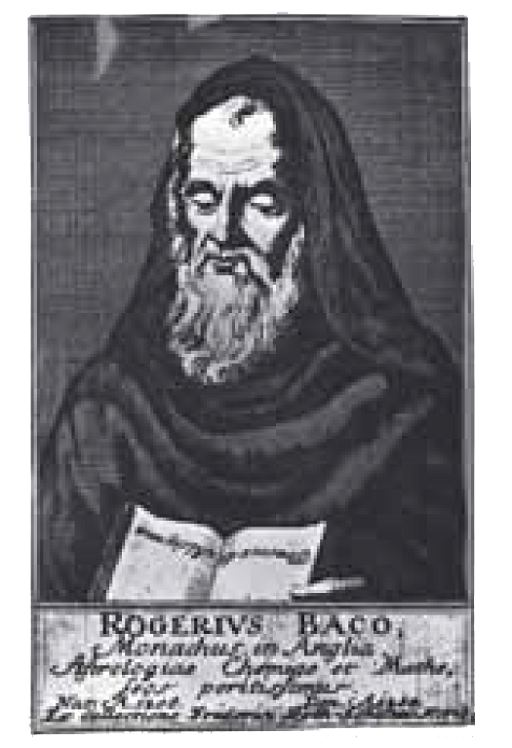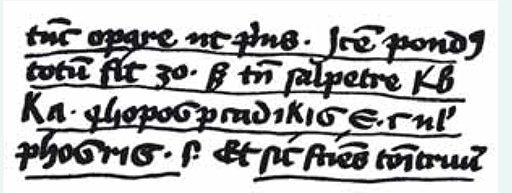3 Gunpowder – the explosive reaction of charcoal, sulfur and potassium nitrate
An explosive is a material that releases large quantities of hot gas extremely rapidly, and very violently.
Indeed, the following quote is attributed to Roger Bacon (Figure 1), a Franciscan monk who introduced gunpowder (also known as blackpowder) to Europe in the 13th century:
‘By the flash and combustion of fires, and by the horror of sounds, wonders can be wrought, and at any distance that we wish, so that a man can hardly protect himself or endure it.’
Gunpowder consists of sulfur and charcoal (fuels), mixed with potassium nitrate (an oxidiser – a type of chemical which a fuel requires in order to burn).
The basic mixture was, in fact, originally discovered by eighth century Chinese alchemists. However, Bacon experimented with the relative proportions and undertook a detailed scholarly investigation into the explosive. As a consequence he incurred the wrath of the Church, and suffered long term imprisonment for his efforts. However he did manage to preserve his recipe for blackpowder in the form of an anagram (Figure 2).
In fact on line two, you can make out the word ‘saltpetre’, the old fashioned name for potassium nitrate.
A simplified (unbalanced) equation for the deflagration (a self-propagating burning surface reaction) of gunpowder is shown below – re-write this in balanced form.
KNO3 + S + C = K2S + CO2 + N2Equation label: (5.9)- 2KNO3 + S + 3C = K2S + 3CO2 + N2Equation label: (5.10)


